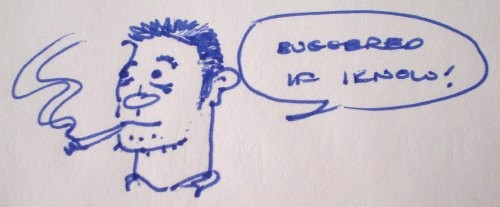The WCAG Working Group clings to the untruth that the term “semantics” as used in Web standards is too close to the concept of “semantics” as used in technologies like RDF, hence the Web Content Accessibility Guidelines cannot use that term.
They also claim (during WCAG phone calls) that a single term used in WCAG 2.0 cannot have more than one sense, even though, if you check the UAAG Glossary, “content” has three senses and “user agent” has two. (In fact, the little-known W3C Glossary lists three senses for “content,” only one of which overlaps with the UAAG glossary’s.)
In short, the Working Group’s objections make them look like they’ve been asleep at the wheel for the last four years of our development of Web standards. Sometimes looks can deceive, but not in this case.
I was recently tasked with producing yet another definition of “semantics” for the Working Group, which has a history of ignoring outside expert contributions on this topic. So I decided to solicit even more such contributions.
During the night-before dinner at the @media conference by the River Thames, I handed around an official @media pad of notepaper on which I had written the following:
The Latest Exercise in Shutting WCAG Up
Write down your own definition of “semantics” (or “document semantics”)
and passed it around the table. Responses are as follows:
- Doug Bowman
-
- Described as appropriately and accurately as possible
- Meaning and purpose
- Jeffrey Zeldman
-

- Carrie Bickner-Zeldman
- Meaning
- Derek Featherstone
- The art of selecting the most appropriate tag to provide meaning to content, and extending and redefining that meaning when it doesn’t already exist
- Patrick Griffiths
- 42
- Jeremy Keith
- A nervous twitch triggered by a discussion of
acronymandabbr - Molly Holzschlag
- The meaning of something. In the context of markup and CSS, the meaning of the element or property in relation to the content which it describes
- Andy Budd
- The ability to add meaning and structure to a document
- Andy Clarke
- The most appropriate use of markup elements (tags?) with a focus on using markup to describe the structural architecture of a document without reference to presentation
